Soldiers are the Armed Forces most precious assets. Today, these same soldiers must deploy anywhere in the world and live in hostile areas. Just as most of the western Armed Forces transforms and expects to occupy a smaller footprint in a theater of operations, strategic base camp planning becomes critical. At the same time the lethality of modern and third world weapon systems makes the future battlefield an increasingly hostile environment, both in stability and support operations (SASO) and in war. Therefore the need to provide protection to the force in all phases of build-up, construction, and operation of base camps gains high priority.
Base camps and other forward deployed operating bases are highly vulnerable to conventional and asymmetric/terrorist attacks. The threat-spectrum ranges from mortar fire, primitive rockets and rocket-propelled grenades to snipers and improvised explosive devices (IED). Small, explosive-laden manned and unmanned air vehicles pose a serious threat as well, as does the possible use of nuclear, biological or chemical weapons. However diverse these threats may be, they have one thing in common: they are impossible to predict. The bloody consequences of these threats are readily apparent on an almost daily basis in Afghanistan and Iraq. So there is no denying the danger they represent to troops deployed in harm’s way. Thus indicate current and future force deployments face an increased probability of such attacks. The high casualty rates and disruption to operations caused by such attacks emphasize the need for enhanced protection of deployed Forces.
Regrettably, the time is thus right for a comprehensive system capable of protecting vulnerable military assets around the clock and around the globe. When it comes to protecting military installations, it is absolutely vital to network effects and reconnaissance assets.
An innovative concept which is gaining more and more international attention is created by the German company Rheinmetall Defence. It is named ‘Protective Shield’. The system is based on the closely knit networking of components, which enables users to detect external threats on a timely basis and either to suppress or engage them.
This effort is divided into several thrust areas including protection of bed down areas, enhancements to entry control points, protective upgrades to conventional construction, improved protective positions/bunkers, decision aids for physical security sensors, and base camp protection planning and assessment software.
The core element of the system is the Operation Centre (OpC). Information from the various reconnaissance and surveillance assets flows together here, and is immediately processed into a real-time picture of the situation on the ground and in the air. Automated alarm messages and decision aids enable swift action. In response to concrete threats, the system’s effectors can be programmed for full- or semi-automatic operation. Information systems with open interfaces ensure that data is transmitted instantly from sensors to the various weapon systems and effectors sites and to the quick reaction forces. Mobile special shelters integrates into the overall system. Hardened against ballistic threats and equipped with NBC safe rooms or electromagnetic shielding, these increase troop survivability in the event of an attack. NBC detection technology – derived from the Fuchs/Fox armoured NBC reconnaissance vehicle – can be readily integrated into the system.
The typical structure of the system contains the actual security fence equipped with sensors which set off an alarm if the fence is touched. Behind the fence surveillance cameras that operate in the visual and infrared spectrum, monitor the fence area and are capable of homing on any unusual activity detected in their field of view. The cameras also transmit images to the OpC, triggering an alert. Erected behind the security fence is a wall, earthworks or screen to prevent people from looking into the installation from outside. For the efficient monitoring of a 3 kilometres perimeter around 96 cameras and 125 sensors are needed.
Spaced along behind the fence are Extendable Observation Towers, equipped with the ‘FIRST’ (Fast Infrared Search and Track) system and the ‘BAA’ artillery observation and reconnaissance system. The BAA is coupled with the ‘ZEFF’ friend-foe target identification system.
Supplementing those sensors is the ‘Sniper Location System’ (SLS) which is capable to detect anybody who can observe the installation with optical equipment such as binoculars or a sniper scope. This makes it possible to identify potential threats before the first shot is fired and it is too late. The detection of a threat like that could lead to a split-second interruption by the activation of the ‘WMWA’ smoke/obscurant dispenser. Which instantly interrupts the line of sight of the sniper.
Mobile optical sensors such as drones and robots can supply information on known danger zones without having to expose troops to unnecessary risks. Optical and biometric systems in special mobile shelters can reliably and effectively identify persons and thus control access to installations and facilities. If an unauthorized person attempts to gain entry, he can be quickly and securely isolated. In addition to sensors and to the effectors, and in order to respond as fast as possible to various events on the camp perimeter, a rapid reaction team is kept on standby.
IED – whether concealed along roads or smuggled into installations – pose a great threat to troops. High-power microwave technology can prevent the remote control detonation of explosive devices. Likewise, users can remove and neutralize IED with Rheinmetall’s remotely controlled EOD robotic systems.
Alongside the sensors which are operated directly in the facility under protection, unattended acoustic ground sensors (A/BS) are also integrated into the command system for monitoring large areas in the periphery of the camp which cannot be directly observed. The movements of wheeled and track vehicles can therefore be identified, and, using a cross bearing of several acoustic probes, recognised quickly and precisely. The acoustic probes are deployed manually and camouflaged or delivered to remote locations by artillery rounds. They initialise automatically after being switched on. Whilst in use, the sensors do not require maintenance or monitoring. With the aid of the microphones integrated in the housing, the A/BS is able to identify and follow targets such as vehicles and helicopters at an early stage. In addition this system can also detect and take a bearing on explosions and mortar fires. The detected targets are continuously tracked by means of acoustic arrays, combined of a set of co-located microphones, and sophisticated beam forming techniques. The targets can be located accurately and their position can be displayed on a map.
For the selective monitoring of sections of roads, the ground sensor equipment (BSA) is used. The BSA, which is positioned on the side of the road, consists of acoustic, seismic, magnetic and optronic sensors. The results provided by the individual sensors are merged in the BAA to provide a complete picture. In addition to detecting vehicles, the sensors can also calculate the direction and speed of travel as well as identifying the vehicle class and type.
During a dynamic presentation of the ‘Protective Shield’ system to the German and international military, which took place at Rheinmetall’s Test Centre in Unterlüß in September 2005, many applications of the acoustic detection technology have been demonstrated. Among them a man portable unmanned ground vehicle (UGV) for reconnaissance use. Integrated in the vehicle’s body was an acoustic antenna for the automatic detection and bearing estimation of sound. In addition, the video image of the camera mounted on the UGV was transmitted in real time to the OpC. Also demonstrated were a hand-deployable sensor field to locate and track noise, in the surroundings of the camp, a demonstrator of a helmet mounted acoustic antenna for sniper detection and location and a functional model of an artillery deployed acoustic sensor, which will be deployed by 155 mm howitzer and build up an unattended sensor field.
Finally, in order to monitor the air space and protect the installation from asymmetric air attacks as well as from incoming missiles and high-angle artillery fire, the Skyshield air defence system was deployed. The firing unit includes highly sensitive 3D search and track equipment, state of the art fire control technology and two 35 mm revolver guns with a high rate of fire. The key to successfully combating rockets, artillery shells and mortar grenades (RAM) is ‘Oerlikon Contraves’ AHEAD air burst technology. This technology, tuned to the combat of small and extremely small targets, increases the hit-probability through the use of ammunition programmed to eject its payload of tungsten sub-projectiles just ahead of the target. These high-energy sub-projectiles are capable of destroying even the smallest targets, thereby preventing them from fulfilling their mission. Controlled by the OpC, this unique combination enables extremely small RAM targets to be identified at an early stage and tracked precisely. The process can be carried out in semi- or fully automatic mode. Pyrotechnic concealment and deception products reinforce and augment the system’s defensive capabilities. These include automated smoke/obscurant dispensers as well as flash, tear gas and flash/bang grenades.
At the end of 2004 the US Army carried out extensive trials with their own Skyshield system. Similar tests were also carried out by Oerlikon Contraves in conjunction with the German National Bureau of Procurement and Acquisition. They were able to confirm the performance of the Skyshield 35 AHEAD air defence system against RAM targets. Skyshield has provided operational evidence that the Ahead cloud of sub-projectiles smother the target volume completely no matter whether a single or multiple targets are involved. Firing individual sub-projectiles at mortar grenades proved their devastating effect, thus substantiating the AHEAD concept for combating RAM targets. The bases have been provided for the Skyshield system to be optimised and deployed in this new mission.
To help plan future military installations and their specific configuration, Rheinmetall offers a 3D modelling tool ‘Camp Protection Planning Suite’ (CPPS). This program takes into account the mission statement and an in-depth threat analysis, and factors in security-related concerns, the area’s geographical characteristics and the performance data of the sensors and effectors – thus it is able to propose complete solutions.
In conclusion, ‘Protective Shield’ concept is not a rigid system. Rheinmetall has demonstrated that by using current open interfaces, new and existing sensors and effectors can be effectively linked to the system. Not only in a local network, but on a “plug and play” basis link this network with higher echelon command structures and to other nations C4I and weapon deployment systems. Such networking of existing resources multiplies their operational effectiveness, allowing the user to achieve the same outcome with fewer forces than it would have needed even a few years ago – an important and highly welcome factor in this era of tight defence budgets. The modular design of a ‘system of systems’ such as ‘Protective Shield’ can be progressively expanded and enhanced.




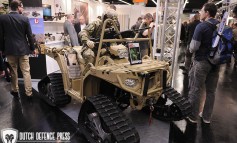
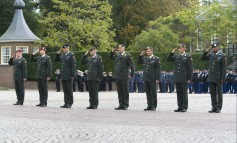
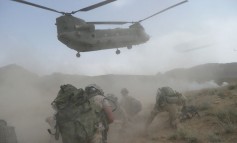
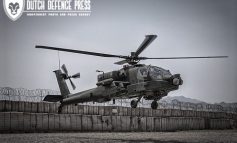
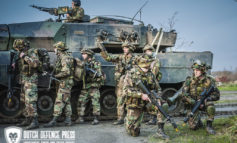
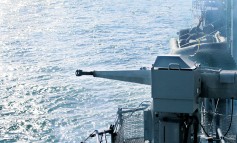



Leave a Reply